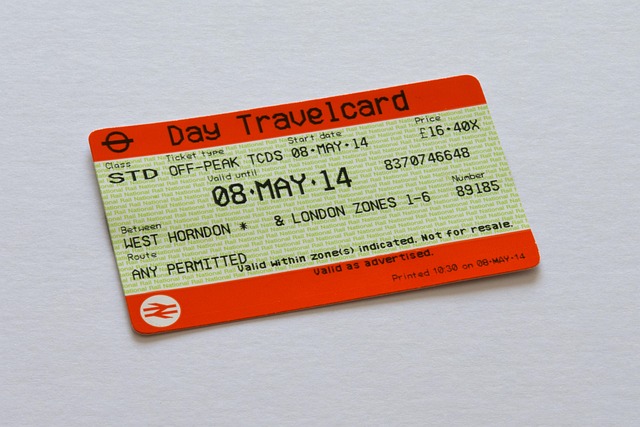Vignette Ticket: A Small Document for Big Adventures
The allure of open roads beckons adventurers, whether they seek the thrill of speed, the charm of scenic landscapes, or the opportunity to embark on cultural discoveries. For many travelers, a simple yet significant item known as the vignette ticket has become synonymous with car journeys in various countries. This small document, often overlooked, serves a critical function for road users and plays a role in ensuring the smooth flow of traffic, maintaining infrastructure, and enhancing the travel experience.
What is a Vignette Ticket?
A vignette ticket is a form of road tax that grants vehicles permission to use certain highways and roads. Often represented by a sticker or a digital document, it is usually valid for a predetermined period, ranging from a few days to a year. The concept originated in Europe, where many countries have adopted vignettes as a way to manage road usage and funding for maintenance. When drivers purchase a vignette, they contribute to the overall upkeep of the infrastructure while enjoying a hassle-free travel experience.
The Origins of the Vignette
The term “vignette” initially referred to a decorative design in books and documents, originating from the French word “vigne,” meaning vine. Over time, it evolved into a term indicating a small label or ticket. Its current usage in the context of road travel can be traced back to various nations’ efforts to regulate vehicular traffic and fund roadworks.
Countries like Switzerland, Austria, and the Czech Republic were pioneers in the implementation of vignettes. They sought to mitigate traffic congestion and pollution while ensuring that all users contributed fairly to road maintenance costs. Today, the vignette system has become a popular method of road funding across Europe and beyond.
How Does a Vignette Ticket Work?
The process of acquiring and using a vignette ticket can vary significantly from country to country. Generally, however, it follows a familiar pattern. Travelers must purchase the vignette ahead of using designated roadways, either through traditional outlets such as gas stations or through digital platforms.
Once obtained, the vignette must be displayed clearly on the vehicle, usually on the windshield. Authorities may conduct spot checks to ensure compliance, and failure to display a valid vignette can result in hefty fines. Some countries have streamlined the vignettes with digital solutions, allowing travelers to register their vehicles online, thereby minimizing the risk of loss or theft associated with physical tickets.
Types of Vignette Tickets
Vignette tickets can be broadly categorized based on their validity and the type of vehicle they cover. Here are some common types:
Time-Based Vignettes: These are valid for a specific period, such as 10 days, one month, or one year. They are ideal for travelers who plan short visits or road trips.
Vehicle-Specific Vignettes: Some countries issue vignettes based on vehicle type. For example, passenger cars may have different requirements from trucks and buses, which often pay higher fees due to their larger impact on road wear.
Electronic Vignettes: As technology advances, many nations have introduced electronic vignettes that can be purchased online or via mobile applications. These are linked to license plates, eliminating the need for a physical sticker.
Countries with Vignette Tickets
Several countries across Europe and beyond utilize vignette tickets in their road maintenance strategies. Here are a few key examples:
Switzerland: Switzerland is renowned for its efficient road network, maintained in part through the sale of annual vignettes. The Swiss vignette is a valued pass for access to the country’s well-kept highways and is mandatory for all motor vehicles.
Austria: In Austria, the vignette system applies to nearly all of its highways. The vignettes range from 10-day passes to year-long options, allowing travelers to choose what best suits their journey.
Czech Republic: Travelers in the Czech Republic are required to obtain a vignette for highway use as well. The tickets may be purchased at various locations, including gas stations and dedicated kiosks.
Slovakia: Like its neighbors, Slovakia mandates a vignette for anyone wishing to drive on its motorways. Additionally, they offer an online purchasing option for convenience.
Hungary: Hungary’s vignette system has similar structures, offering multiple choices for users to select a vignette based on duration and vehicle type, making it accessible for both tourists and locals alike.
The Benefits of Using a Vignette Ticket
The vignette system offers multiple advantages that enhance the travel experience for utilizing roads within participating countries. Some of the benefits include:
One significant advantage is the ease of funding road maintenance. Since road infrastructure requires ongoing upkeep, vignettes provide a steady revenue stream that supports repairs and improvements.
Moreover, vignette systems tend to reduce traffic congestion, as they promote responsible road use without significantly penalizing casual motorists. Travelers can enjoy well-maintained roads while covering their fair share of costs.
Vignettes also offer a sense of simplicity. Instead of complex toll systems in some regions that can require cash or credit card transactions at every checkpoint, a vignette streamlines access to highways, allowing for uninterrupted travel.
Finally, the vignette ticket contributes to environmental efforts by incentivizing eco-friendly travel practices. Many countries use revenues generated from vignettes to fund green initiatives, such as reducing emissions and improving public transport options.
Challenges and Considerations
Despite their many benefits, the vignette system is not without challenges. Some travelers may experience confusion over where the vignette is required or the pricing structures, leading to unintentional violations. The disparity in toll systems across countries can also create frustrations for international travelers unfamiliar with local regulations.
Another challenge is the risk of counterfeit tickets. As with any popular system, there can be scams that attempt to sell false or invalid vignettes, placing travelers at risk of fines. It is essential for drivers to purchase vignettes from authorized sellers to avoid such pitfalls.
Moreover, while the vignette system aims to simplify road usage, it can also elevate costs for frequent travelers. Those who take regular trips through areas requiring vignettes may find themselves facing substantial expenses over time, particularly in regions where commuting is necessary.
Conclusion
The vignette ticket might be a small document hardly noticeable among the vast array of travel necessities, yet its impact on the driving experience cannot be overstated. As a critical contributor to road funding and infrastructure maintenance, it ensures that travelers enjoy safe and accessible routes while providing a structured approach to road usage.
While challenges exist, understanding the role and significance of vignette tickets empowers adventurers and occasional drivers alike to navigate them confidently. As the world witnesses increasing mobility, the vignette system stands as a testament to the ongoing efforts to blend travel freedom with responsible road management, enabling big adventures, one small document at a time.


